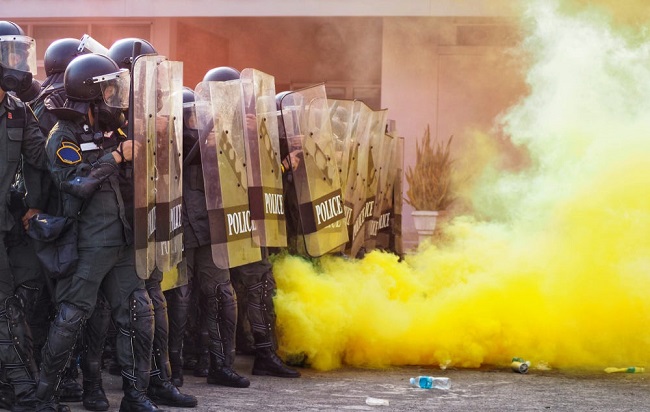Sulfur mustard, sometimes known as mustard gas, refers to a group of chemicals with the molecular formula SCH2CH2Cl. Sulfur mustards and nitrogen mustards (X = Cl, Br) refer to compounds with the substituent SCH2CH2X or NCH2CH2X, respectively.
These substances are powerful alkylating agents that can disrupt several biological procedures. These chemicals, which are also found in mustard, are notorious for their cytotoxic and blistering effects.
Technically speaking, the chemicals commonly referred to as “mustard gas” are not gases but rather a fine mist of liquid droplets when released.

Mustard gases cause blistering of the skin and lungs upon contact, which can cause serious disease and even death. Bis(2-chloroethyl) sulfide, an organosulfur chemical, is the typical mustard gas. Now let’s find out how to make mustard gas.
Read Also:
Mustard Gas are Extremely Toxic
Mustard fumes are very corrosive and cause severe skin blistering when inhaled. They are highly carcinogenic and mutagenic due to their alkylating properties. Additionally, their high lipophilicity facilitates rapid internal transport.
Due to the delayed onset of symptoms and the seemingly normal appearance of contaminated areas, victims can unknowingly receive high doses of mustard agents. Victims of exposure develop severe itching and skin irritation within 24 hours. Wherever the agent made contact with the skin, blisters filled with yellow fluid (pus) can form if the irritation is not treated.
These burns are chemical and are quite painful. Mustard vapors can quickly permeate natural fibers like wool and cotton, causing burns to more than just the skin.
If the victim’s eyes were compromised, they would have conjunctivitis (pink eye) and eventually, as a result of the swelling of the eyelids, temporary blindness. Corneal ulceration, anterior chamber scarring, and neovascularization have all been linked to prolonged contact with mustard gas fumes in the eye.
Mustard Gas to Modern Medicine
Another outstanding chemist, Professor Alexander Haddow, returned to the United Kingdom after World War II and took over as the head of the Chester Beatty Research Institute, which was supported by one of the original charities that later combined to establish Cancer Research UK.
He was developing chemicals to prevent tumor growth and treat cancer. He only needed a “lead,” or an effective molecule to work from, to make a major discovery in cancer treatment. Mustard gas provided him with that all-important springboard.
Haddow’s groundbreaking study on the nitrogen mustard molecule and its ability to kill cancer cells was published in the journal Nature in 1948. He also discovered a way to reduce the chemical’s toxicity while increasing its cancer-fighting efficacy, which is arguably more crucial.
Haddow initially shown that nitrogen mustards could halt tumor development in rats. Then, in experiments resembling those conducted with Lego bricks, he swapped out certain ‘bricks’ of the molecule for others. When parts of the molecule were switched out, namely one of two chlorine atoms, the molecule lost its ability to prevent tumor growth in his rats.
History
It is generally accepted that the production of mustard gas in 1860 was accomplished by British chemist Frederick Guthrie. Some of the compound’s harmful effects hit him while he was producing it.
In 1917, Germany began using mustard gas as a chemical weapon in World War I. France and Britain quickly developed their own mustard gas capabilities after seeing its use on the battlefield for the first time.
In an effort to incapacitate as many of the enemy’s men as possible, mustard gas was supplied to them using a variety of means, including spraying it from airplanes and employing it in bombs, shells, and rockets. Mustard gas was responsible for the deaths of roughly 2% to 3% of soldiers, and the permanent discharge of many more.
Read Also:
Conclusion
Mustard gas and hemi-mustard are both vesicants (blister skin), but the three molecules of HCl produced in the hydrolysis step are also skin irritants. Mustard gas, in solid form, has been discovered to persist underground for up to 10 years, despite being easily hydrolyzable.
This is because the formation of thiodiglycol consumes most of the available water at the solid surface. The subsequent reaction of the sulfonium intermediate with this rather than another molecule of water is possible because the concentration of water molecules at the bulk surface is now lower than the concentration of thiodiglycol.
This results in the formation of inert sulfonium salts that surround the bulk substance and block any further chemical reactions. Hope now you know how to make mustard gas.






















